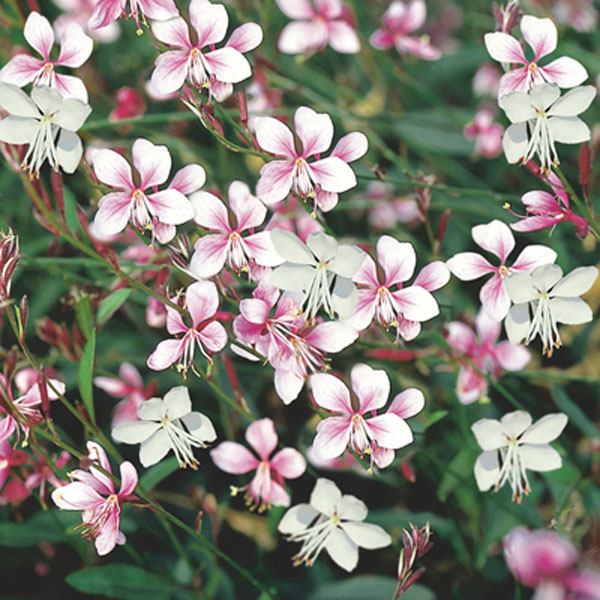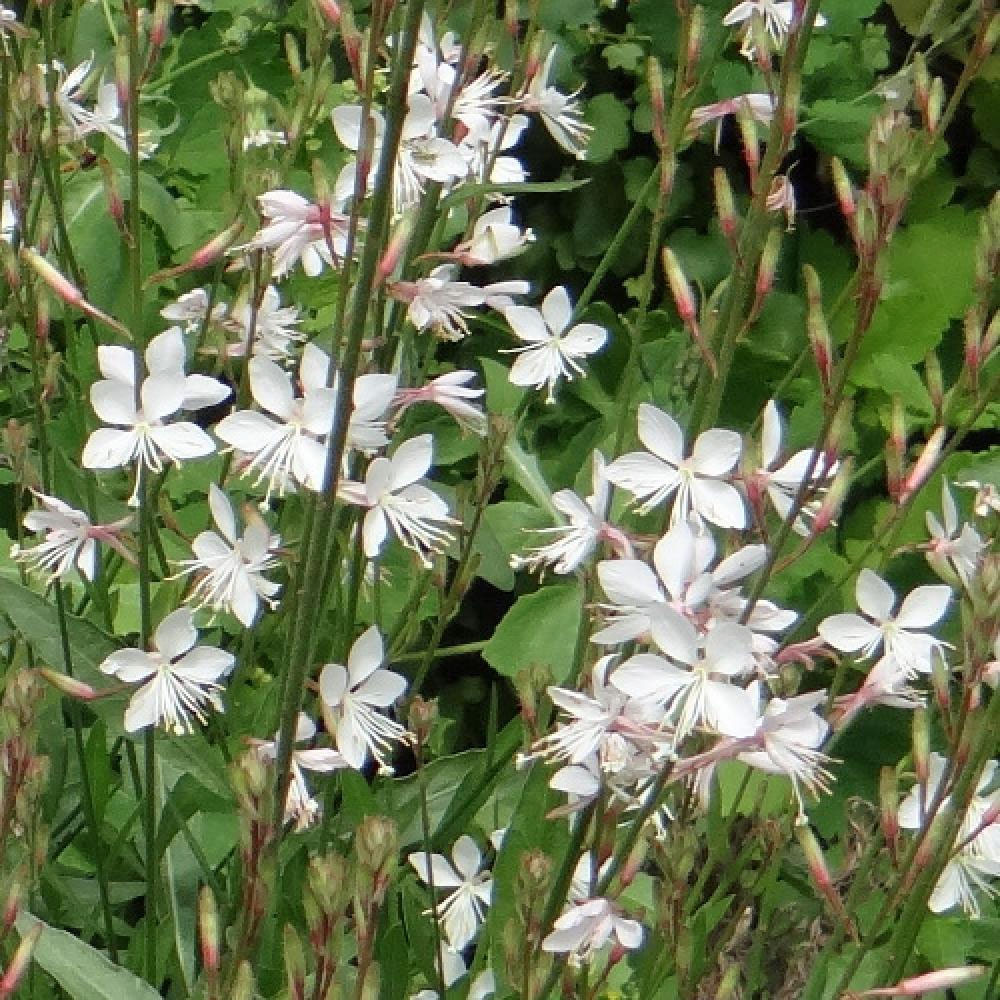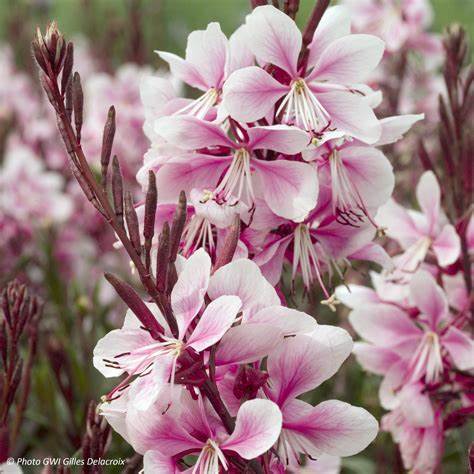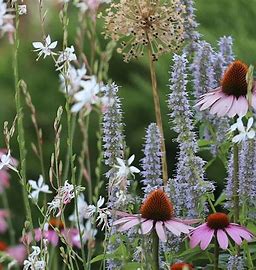
Many call them the butterfly bush. This is not so much for their ability to attract butterflies, but because, when the breeze catches their long thin delicate stems laden full of flowers, they sway gently back and forth, to create a beautiful vision of a mass of circling, dancing butterflies. Little is finer.
Gauras are one of the most valuable perennials you could ever wish for in any garden design. Their longevity in their flowering, about 6 months, from late Spring right through until late autumn is always promised and always delivered. They originated in the North of America. The most common variety ‘lindheimeri’ will grow to a height of 1.2m.
Gauras come in either white or pink flowers, however newer varieties can have a combination of the two and with different degrees of shadings. Most notable are the new ‘Belleza’ hybrids with shorter, more compact stems. I much prefer the white for its snow white crisp clear colour. The pinks are not to be ignored but at these times, the pink flowers of annuals and perennials seem to dominate, so to my mind the less pink the better.

I well remember, for a year or two Gauras were unavailable. I believe this was due of their unfortunate propensity to readily self-seed and thus become an invasive weed. But what a great weed it was. But now they are back on the market. I am unsure why, maybe all the new varieties are now sterile and are unable to throw viable seeds and self sow.
Many years ago, I was lucky enough to visit a great expansive garden, created by the very highly respected garden designer Caroline Robinson. It was a true masterpiece in landscaping. In one area she had been brave enough to create a large planting solely devoted to white flowering Gauras. This mass of Gauras, in long wide drifts, flanked each side of the front entrance path leading to the house. It was a revelation, so simplistic in design yet so grand in its confidence and execution. Unforgettable.
One of the great benefits of Gauras are their minimal maintenance and care. They are simplistic to grow in practically any soil and are impervious to frost, drought and summer heat. All they require is a good smack back haircut in spring. They will grow in any soil, but again, the better the soil the better the results. Once a year I apply a generous application of the tonic Seamungus and pelletised chicken fertiliser Rooster Booster, water well, then mulch with sugar cane and water well again. Then off they go once more to create without fail its unique and stunning flower displays. Like any plant a casual deep watering may be needed when the summer is dry, hot and long. They have no pests or diseases to mention.
Gauras epitomise the present fashionable prairie planting style of gardening, an attempt to partially replicate the naturalistic schemes of the countryside.

As mentioned before a massed planting of Gauras is truly spectacular, that is if you have the room. Most gardeners don’t. So a small gathering grouped together in odd numbers can still make a great statement. Even a single planting is far better than none at all.
If you wish to accompany them with other summer/autumn flowering perennials great choices are Perovskia or Russian sage, Echinops and Eryngiums, Rudbeckias and Echinaceas, Buddlejias, Dahlias, even Roses, Salvias of any colour, and at their feet catmint or sea side daisies,

Remember Gauras are perennials, so in winter when they are in growth hibernation, you need to create essential form and structure with the accompanying plantings of evergreen shrubs. Perfect candidates are low mounds of Buxus, Berberis, Hebes, English Lavenders or Rosemary ‘Blue Lagoon’, with a backdrop of a hedge, say of Escallonias, Elaeagnus or Michelias.
Happy gardening and have fun,
Regards Ned McDowell.